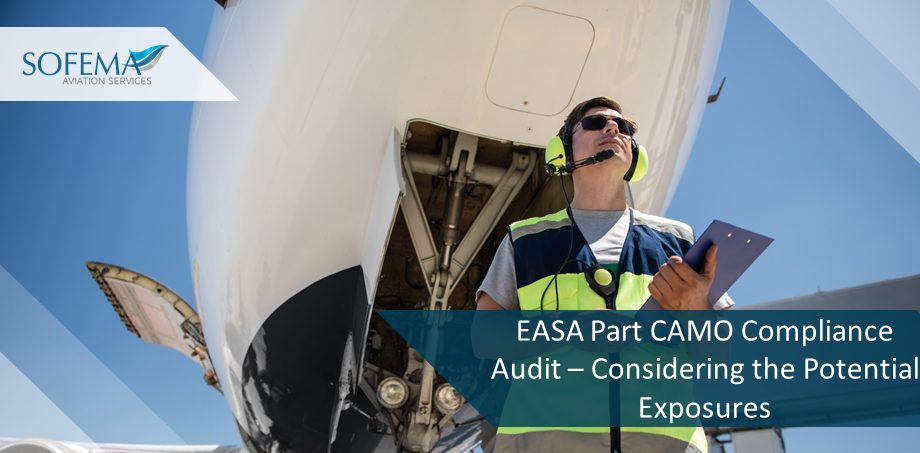Sofema Aviation Services (SAS) www.sassofia.com considers the issues which are likely to be uncovered during a Compliance Audit of an EASA-compliant Continuing Airworthiness Management Organization (CAMO)
Introduction
Within the following areas may be found a number of exposures – however please note that while these are potential issues, many CAMOs operate at a high standard and may not have these problems.
The goal of any Compliance Audit is to identify areas of non-compliance and ensure that the organization takes corrective actions to meet EASA standards.
Specific Areas of Potential Exposure
Documentation and Records:
- Missing, incomplete, or outdated Continuing Airworthiness Management Exposition (CAME).
- Inadequate record-keeping of aircraft maintenance and airworthiness reviews.
- Absence of required manuals or outdated versions in use.
Personnel Qualifications and Training:
- Lack of evidence of required training for CAMO personnel.
- Absence of job descriptions or evidence of competency for key personnel.
- Inadequate or missing recurrent training records.
Airworthiness Review Procedures:
- Non-compliance with airworthiness review procedures.
- Inadequate tracking or follow-up on airworthiness review findings.
Contracted Services:
- Lack of oversight or audits of contracted services.
- Missing or inadequate contracts with service providers.
- Service providers not meeting EASA standards.
Quality Management System:
- Non-compliance with internal audit schedules.
- Inadequate corrective actions following internal or external audits.
- Absence or inadequacy of a feedback system for continuous improvement.
Safety Management System (SMS):
- Inadequate hazard identification or risk assessment processes.
- Missing or ineffective safety reporting system.
- Lack of safety training or awareness among staff.
Technical Data and Documentation:
- Use of outdated or unapproved technical data.
- Missing or incomplete aircraft technical logs.
Aircraft Maintenance Program:
- Non-compliance with the approved maintenance program.
- Inadequate monitoring or updating of the maintenance program based on aircraft usage or OEM recommendations.
Communication with Authorities:
- Failure to report significant incidents or accidents to the relevant authorities.
- Inadequate communication or delayed responses to airworthiness directives or other mandatory requirements.
Facilities and Equipment:
- Inadequate facilities for the storage of aircraft components or documentation.
- Use of uncalibrated or outdated equipment.
Performance Reviews:
- Absence of periodic performance reviews or evaluations of the CAMO’s effectiveness.
- Lack of metrics or key performance indicators to measure CAMO performance.
- Situations where personal or financial interests might compromise airworthiness decisions.
Emergency Response Planning:
- Absence or inadequacy of an emergency response plan.
- Lack of training or drills related to emergency scenarios.
Next Steps
Follow this link to our Library to find & Download related documents for Free.
Sofema Aviation Services (www.sassofia.com) and Sofema Online (www.sofemaonline.com) provides Classroom, Webinar and Online Training – Please see the websites or email team@sassofia.com for additional information or questions
Tags:
Aircraft Maintenance, Aircraft Maintenance Program, Compliance Audit, Quality Management System, Safety Management System, EASA Part – CAMO, SAS blogs, Emergency Response Planning, Airworthiness Reviews, Continuing Airworthiness Management Exposition (CAME), EASA standards, Continuing Airworthiness Management Organization (CAMO), OEM recommendations




